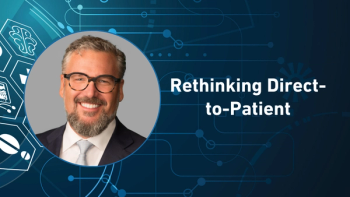
- Pharmaceutical Commerce - May/June 2016
Laying the foundation for a national system for evidence generation
Sharing clinical data—EvGen—will improve both drug development and health outcomes analysis
Across the clinical research enterprise, there is a growing awareness of serious shortfalls in the current paradigm of generating the scientific evidence that supports medical product evaluation and clinical care decisions, and the need to modernize methods and expectations surrounding this evidence base.
We know, for instance, that most clinical practice guideline recommendations are not based on high-quality evidence*, typically derived from appropriately designed randomized controlled trials. We also know that adherence to standards supported by such high-quality evidence results in better outcomes for patients.
There is reason to believe that we’ve arrived at a tipping point where previously separate, “siloed” efforts can be linked to create a national system for evidence generation (EvGen). In this first of a series of posts, we’ll take a look at the elements required to build such a national system, beginning with a pair of foundational concepts—interoperability and connectivity.
Interoperability
Put simply, interoperability is the idea that different systems used by different groups of people can be used for a common purpose because those systems share standards and approaches. To take one example: modern train tracks employ agreed-upon standards in terms of track gauge and other specifications so that many different kinds of vehicles can safely use the rail system.
In similar fashion, a national system for evidence generation that applied common data standards and definitions could “lay the track” for significant improvements in the exchange of biomedical data. Patients, consumers, professional groups, payers, the medical products industry and health systems all stand to benefit from potential gains in efficiency and reductions in cost that would accompany standardized approaches to data collection, curation and sharing, once up-front investments are absorbed. Then, with these standards in place, effort could be devoted to generating actionable knowledge rather than simply managing data.
Connectivity
Establishing interoperable systems is a critical step in building a national system for evidence generation. An equally important step is to enable collaboration among the many groups that generate data, for example patients, clinicians, hospital systems and health insurance organizations. Evidence is derived from high-quality data that often originates from many different sources or settings. We can create an interconnected environment that leverages all the available data to provide answers to important public health questions. A defining characteristic of such a network is the ability to leverage all available data for different tasks as needed, allowing the network to integrate complex relationships between data input and output. Coupled with interoperable standards, a national system for evidence generation based on these principles will be capable of generating very large quantities of data and enabling those data to flow among system components.
The result? Researchers will be able to distill the data into actionable evidence that can ultimately guide clinical, regulatory and personal decisionmaking about health and healthcare.
These two core constructs represent the essential scaffolding that must be developed and put in place to support a national system for evidence generation. [Going forward] we’ll examine ways we can begin building and continuously improving such a system for the benefit of all stakeholders.
ABOUT THE AUTHORS
Robert M. Califf, MD, is commissioner of the US Food and Drug Administration; Rachel E. Sherman, MD, MPH, is FDA’s Associate Deputy Commissioner for Medical Products and Tobacco. This article is excerpted from FDA Voice, the agency’s blog, posted on April 19, 2016:
Articles in this issue
over 9 years ago
FDA looks to industry for help in DSCSA complianceover 9 years ago
Clinical cold chain vendors go into a deep freezeover 9 years ago
Oncology: a new era in therapies; same cost concernsover 9 years ago
Brand enhancement and safety with unit-dose packagingover 9 years ago
Managing supply chains from the cloudover 9 years ago
Changing the payment paradigmover 9 years ago
Specialty pharmacy dynamicsNewsletter
Stay ahead in the life sciences industry with Pharmaceutical Commerce, the latest news, trends, and strategies in drug distribution, commercialization, and market access.




